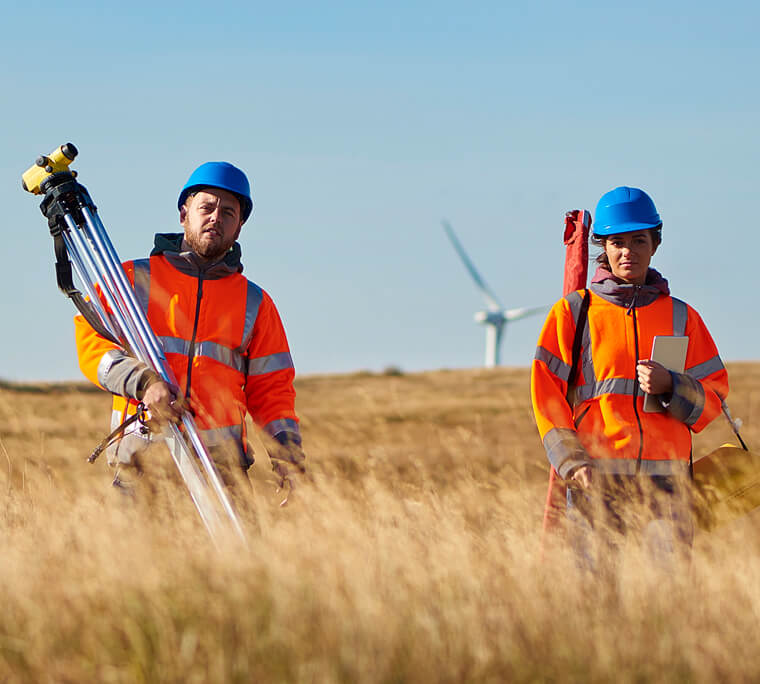
Building Skills Connections Series
Skills for a Prosperous Alberta
Commissioned by the Government of Alberta’s Ministry of Advanced Education, in partnership with NorQuest College, The Conference Board of Canada’s Building Skills Connections Series examines the post-secondary skills needed to ensure Alberta’s current and future prosperity. The series draws on a review of relevant data and literature, interviews with over 40 Alberta employers and labour market experts, and results from the Conference Board’s 2018 Alberta Employer Survey.
Findings

Alberta in a Nutshell
Provides a broad overview of skills supply and demand in Alberta and explores the disruptors shaping the province’s economy.
Report • 34-min read

Key Alberta Sectors
Examines skills needs in seven key sectors of Alberta’s economy: oil, gas, and mining; finance, insurance, and real estate; agriculture and agri-food; health and medical; renewable energy and environmental products and services; cultural and creative industries; and technology.
Report • 38-min read

Perspectives of Alberta Employers
Shares findings from a survey of nearly 400 Alberta employers about the workforce skills, occupations, and credentials they need to thrive.
Report • 21-min read
Key Highlights
We learned in Alberta in a Nutshell that Alberta is well positioned to thrive amid disruptors like demographic change and rapid technological development, but meeting the demand for skilled workers will be essential to ensuring the province’s long-term prosperity. Along with Manitoba, Alberta is one of just two provinces whose labour force growth is not expected to weaken between now and 2040, partly because it has the youngest population.
Canada is aging—but Alberta is in the best shape
(percentage of population aged 65 and older in 2016 and 2040, by province)
f = forecast
Source: The Conference Board of Canada.
Although the province’s labour force market is not expected to weaken by 2040, Alberta employers worry about losing skilled workers to retirement.
Majority of Alberta employers worry about losing skilled workers to retirement
(percentage of respondents, n = 254)
Note: The chart title refers to concern about losing employees with specialized skills to retirement in the next three to five years.
Source: The Conference Board of Canada.
Employers in the province face a variety of challenges in recruiting and developing workers. In Key Alberta Sectors, employers from across sectors explain that they face a range of workforce skills needs and perceive a wide range of consequences related to skills gaps.
For Alberta employers, skills gaps have a wide range of perceived consequences
(percentage of respondents, n = 255)
Note: Percentages sum to greater than 100 because of multiple responses given within the question categories.
Source: The Conference Board of Canada.
Making things trickier, the skills needs of Alberta’s key sectors are changing. More than 87 per cent of Alberta employers we surveyed reported that they had shifted to a more highly skilled workforce to some extent over the past three to five years.
Alberta employers are transitioning to a more highly skilled workforce
(percentage of respondents)
Note: Percentages total more than 100 because of multiple responses given within the question categories.
Source: The Conference Board of Canada.
Survey results indicate that employers believe their greatest skills challenges over the next three to five years will relate to employability and essential skills (e.g., problem-solving, critical thinking, teamwork, and communication). Technical and occupation-specific skill sets are also in high demand, as identified by 60.3 per cent of respondents.
What do employers want? Essential and technical skills
(percentage of respondents, n = 320)
Note: Percentages total more than 100 because of multiple responses given within the question categories.
Source: The Conference Board of Canada.
Employers in the province emphasize the need for a post-secondary education system that is responsive to labour market needs and agile enough to keep up with evolving workplaces and technologies. Currently, about 58 per cent of Alberta’s labour force holds a post-secondary credential, and this number is expected to rise to 64 per cent by 2025.*
More than half of Albertan workers hold a post-secondary credential
(percentage of labour force aged 15 or over by educational attainment, 2016)
Note: Total does not add to 100 due to rounding.
Source: The Conference Board of Canada.
* Alberta Advanced Education, Campus Alberta Planning Resource 2016, accessed October 16, 2018.
While post-secondary credentials are on the rise, employers report that graduates don’t always have the skills they need. In Perspectives of Alberta Employers, we heard that to meet their skills needs, 54.8 per cent of respondents said they planned to keep investing in employee training at current levels and 43.1 per cent said they planned to invest more or substantially more. Only 2 per cent of respondents were planning to invest less.
Employers say they will keep investing in employee training
(percentage of respondents, n = 248)
Source: The Conference Board of Canada.
Employers are changing their recruitment strategies, with many taking advantage of work-integrated learning programs.
Co-op, mentoring, and paid internships among the most popular forms of work-integrated learning for Alberta employers
(percentage of respondents)
Note: Percentages sum to greater than 100 because of multiple responses given within the question categories.
Source: The Conference Board of Canada.
Our interviewees confirmed that post-secondary institutions and industry are already making important efforts to tackle skills challenges collaboratively. Most employers said they thought they had good or very good opportunities to communicate their skills and training needs to post-secondary education institutions—but a third saw these opportunities as limited, and 5.6 per cent saw them as non-existent.
Most employers believe they have good or excellent opportunities to communicate their needs to post-secondary institutions
(percentage of respondents, n = 248)
Source: The Conference Board of Canada.
Summary

We argue in the Building Skills Connections Series that there are opportunities to build stronger linkages—not just to invest in the future labour pipeline, but also to meet evolving skills needs among current workers.
Employers called for increased engagement and collaboration between industry and post-secondary institutions through a variety of avenues, from hosting employer-student network events, to facilitating the upskilling of current employees. They also highlighted content they would like to see incorporated into post-secondary programs, such as Indigenous culture and practices and industry standards and tools. Finally, they emphasized the need for post-secondary institutions to anticipate and adapt quickly to changes in Alberta’s economy.
As Alberta’s economy rebounds in 2020,* new pipelines for skills development will be needed to sustain momentum. Employers and post-secondary institutions must keep developing new partnerships and innovative approaches, while building on existing initiatives.
This three-report series sheds light on the skills, post-secondary credentials, and occupations needed for Alberta to be prosperous now and in the future. It builds on existing research about the future of work, skills, and Alberta’s economy by capturing the perspectives of employers and other stakeholders from key Alberta industries. We plan to expand the Building Skills Connections Series to include other provinces and territories.
*The Conference Board of Canada, Provincial Outlook Economic Forecast: Alberta—Spring 2019 (Ottawa: CBoC, June 7, 2019).

